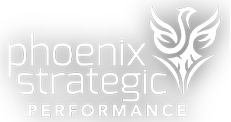How do you maximize every sales effort? How do you ensure that every sales activity – starting right now – has rigorous analysis, thought, and planning behind it? The sales function is the growth engine that will make strategic initiatives a reality, or not! Business strategy is determined for the business year. You don’t have the luxury of waiting a month or quarter to start generating sales results. So, what can sales managers do to ensure that every salesperson hits the ground running with the right equipment and the right roadmap? That roadmap is the operating guide to the year ahead, and the basis of that operating guide is The Client Business Plan. Let's review the four pillars of the complex selling process.
The Four Pillars of the Complex Selling Process
Foundational Elements of the Client Business Plan
Pillar One: The Selling Benchmark
The Value Opportunity
The wallet value assessment of each client determines the time, effort and urgency involved. Clients will fall into high, moderate, and low-value categories. This becomes the mechanism to segment your client base, allowing sales management to determine if the correct activity is being put into the right client accounts. Sounds simple, right? It is amazing how many salespeople plan their time without this information. When all accounts are treated equally, then activity doesn’t have priority. Without priority, how can there be managed urgency?
Client Relationship Management Assessment - Build, Maintain and Erode
Every client should have an objective assessment of the current state of the sales relationship. This is based on an analysis of the following:
- Value Opportunity
- Time Invested
- People Contacted
- Results Achieved
- Sales Targets Relative to the Value Opportunity
Pillar Three: The Milestones
The Total Client Buying Center (TCBC)
In the complex selling process, the client is a collection of individuals within the buying organization who are either directly or indirectly involved in the buying decision-making process. Each person should have a relationship assessment, and based on that assessment, will have a build, maintain or erode designation. Based on that designation, robust planning activity can begin.
Pillar Four: The Journey
Priorities, Urgency, and Smart Activity
From the above assessments, salespeople will have an objective assessment of the current state of the overall business relationship. It doesn’t matter if the current state is good, bad, or indifferent. It is now simply the starting point for the journey with a plan that will allow salespeople to prioritize, measure, and maximize every activity.
The Sales Challenge
I have often heard both managers and salespeople complain that the business planning process takes too much time. Here’s the sales challenge:
- With so many variables that can derail the complex sale, how can you afford not to develop and then work on a plan?
- How can you determine if all the time and effort expended by salespeople is just activity, or is it smart, focused, and optimized activity?
- Managers, how can you manage and measure activity vs. results without a robust plan as the benchmark?
Planning can take your organization to the next step with the right clients at the right time with the right resources. Revenue growth that happens by method rather than by chance is revenue growth that is scalable, predictable, and forecastable. Now go forth and plan!
We invite you to download our complimentary complex selling eBook to learn how to accelerate the sales process and create a more sustainable business development process at your company.






